Suzuki last did a major update of the Hayabusa in 2007, then fitted ABS and Brembos in 2013, but the machine continues to impress to this day... Reflection by Jeff Ware Photography by Keith Muir
Thank the Hyperbike Gods that Suzuki have had the common sense and emotional attachment to their flagship model not to reinvent the wheel when it comes to the Hayabusa, with the last update taking place in 2013, most notably for the adoption of Brembo brakes.
Buying a model today you’re getting essentially the same machine as we tested at the launch back in 2013, although 2018 does boast a new set of colour scheme/graphics options, that certainly stand out. Here’s a look back at the launch, and how the Hayabusa stacked up.
I dial up 3000rpm and the engine is just humming past idle, the ideal launch rpm for a Hayabusa. I pull in the clutch. Select first gear. Roll into stage and light the first staging light. I gently nudge the bike forward and light the second light up. A nice shallow stage. The clutch is deep in pull and I’m holding the bike back, my stomach hard into the tank, left leg on the ‘peg ready to shift, right foot just touching the ground. Yellow. Yellow. Go!
I launch down Willowbank Drag Strip on the Hayabusa. The bike pulls hard in first, front wheel 6in off the deck. I grab second and the front touches down like a Boeing 747 then rapidly accelerates forward. Third. Fourth. Fifth gear. I cross the line with a 10.147@143.6mph. A 0.09 reaction time and a 1.8 60ft have me smiling but it’s not enough to be the fastest journo on the day – that went to Alex Gobert. Typical midget ex factory rider!
The acceleration and aerodynamics package of the Suzuki Hayabusa is that of legend. Until you run one down the chute and feel that top end, you just won’t understand. Even hardened superbike racers get off these things grinning like crazy people. The faster you go, the faster the Hayabusa accelerates. A more addictive ride is yet to be produced by any manufacturer.
Suzuki nailed it with the ‘Busa, which brings me to my next topic. Changes, or lack of… The last major update of the Hayabusa was the K8, launched in the USA in late 2007. I attended the launch and remember being so blown away by the bike that I simply thought it could not be improved. The following year we got our own long term Hayabusa, which we built into one of our best project bikes to date. I personally did around 25,000km on that bike and I loved every turn of the wheel.
Heather and I also toured Europe for three weeks on a Gen2 ‘Busa plus did a lap of Tassie. In short, I’ve had a long love affair with the Hayabusa. I also like turbo all-wheel drive Subaru’s, particularly the WRX. Well, I did until the best looking four-cylinder car out of Japan got a complete redesign to the point of not being recognisable. I lost interest and bought a Holden V8.
Thank the Hyperbike Gods that Suzuki have had the common sense and the same emotional attachment to their flagship model that people like me have – and they have not restyled this iconic bike, making the dreaded Subaru mistake. Over the past five years, the only upgrade I’ve really done to mine and the main one I see is to the brakes. This has been addressed now with the addition of Brembo calipers plus ABS and aside from that, Suzuki, please don’t change this stunning bike!
The Ride: Suzuki Hayabusa
Suzuki Australia put on a great event for us all to sample the updated version of this iconic machine. The changes are new colours, Brembo calipers and a fantastic ABS system. Aside from that the bike is as per Gen2 original.
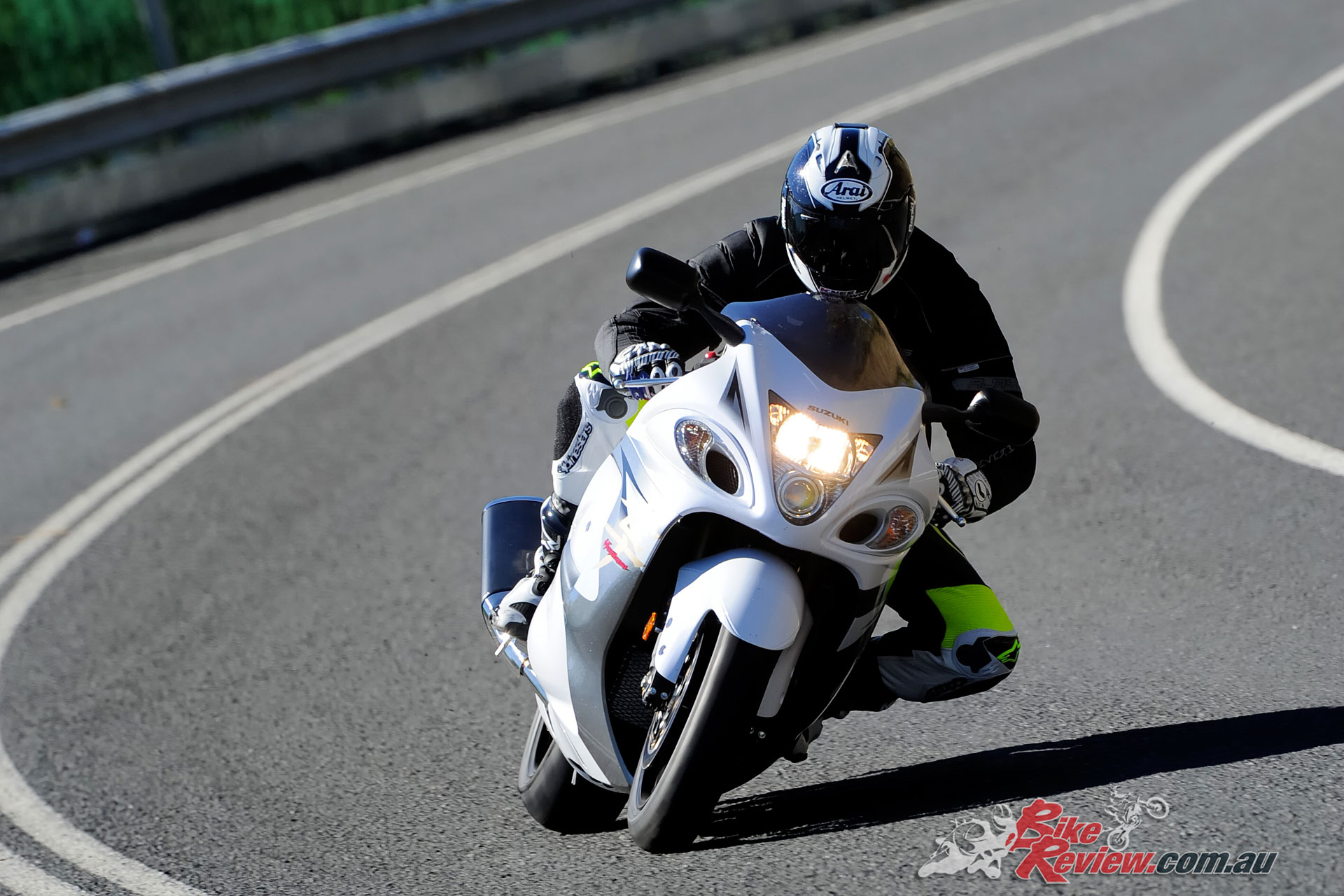
The Hayabusa saw new brakes and ABS added in 2013, it’s a testament to the quality of this machine that nothing else was needed and still isn’t.
Heading off on the road ride I was instantly at home on the bike and within 10-minutes I was settled into what I call the ‘Hayabusa Trance’ where I seem to become more connected with the bike than usual – rolling into big fast turns and accelerating hard out of them onto the next one.
A Hayabusa can be an extremely expressive and soul satisfying experience for any motorcyclist – I’ve spoken about this with other ‘Busa riders and they too have found that place of ‘Busa Zen – even the legend Shawn Giles knew what I was talking about when we chatted about the bike.
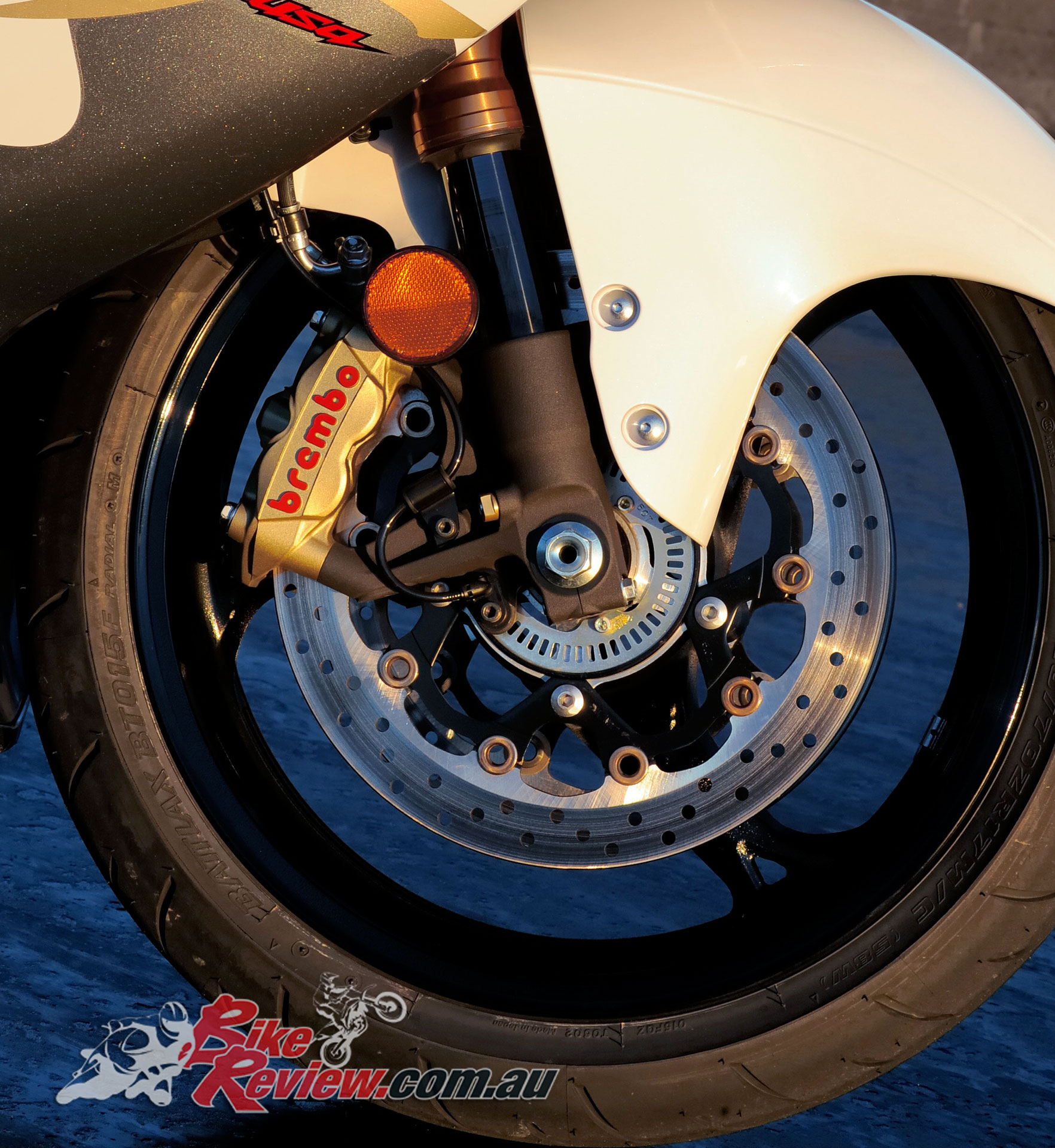
Brembo calipers put to bed complaints from the Gen2 model, with fade an issue on the standard Tokico offerings in that generation plus a lack of power.
A combo of tighter, twistier corners came next and this is where the Hayabusa really surprises many newcomers – this bike may look bulky but under that aerodynamic bodywork is a nimble sports chassis that is amazingly capable in the tight stuff. Throw in a few bumps and the solid nature of the bike and the extra weight makes for a stable ride that will leave many sportsbikes following its fat black lines on most roads.
On the open road the Hayabusa is comfortable and vibration free. It pulls like a train from 3000rpm and is the ultimate mile-muncher. The gel seat is soft, footpegs rubber mounted (as is the top triple-clamp, thus the handlebars) and the screen, although low, offers great wind protection – as does the bodywork. Those with a regular pillion take note – there are few better two-up bikes on the planet…
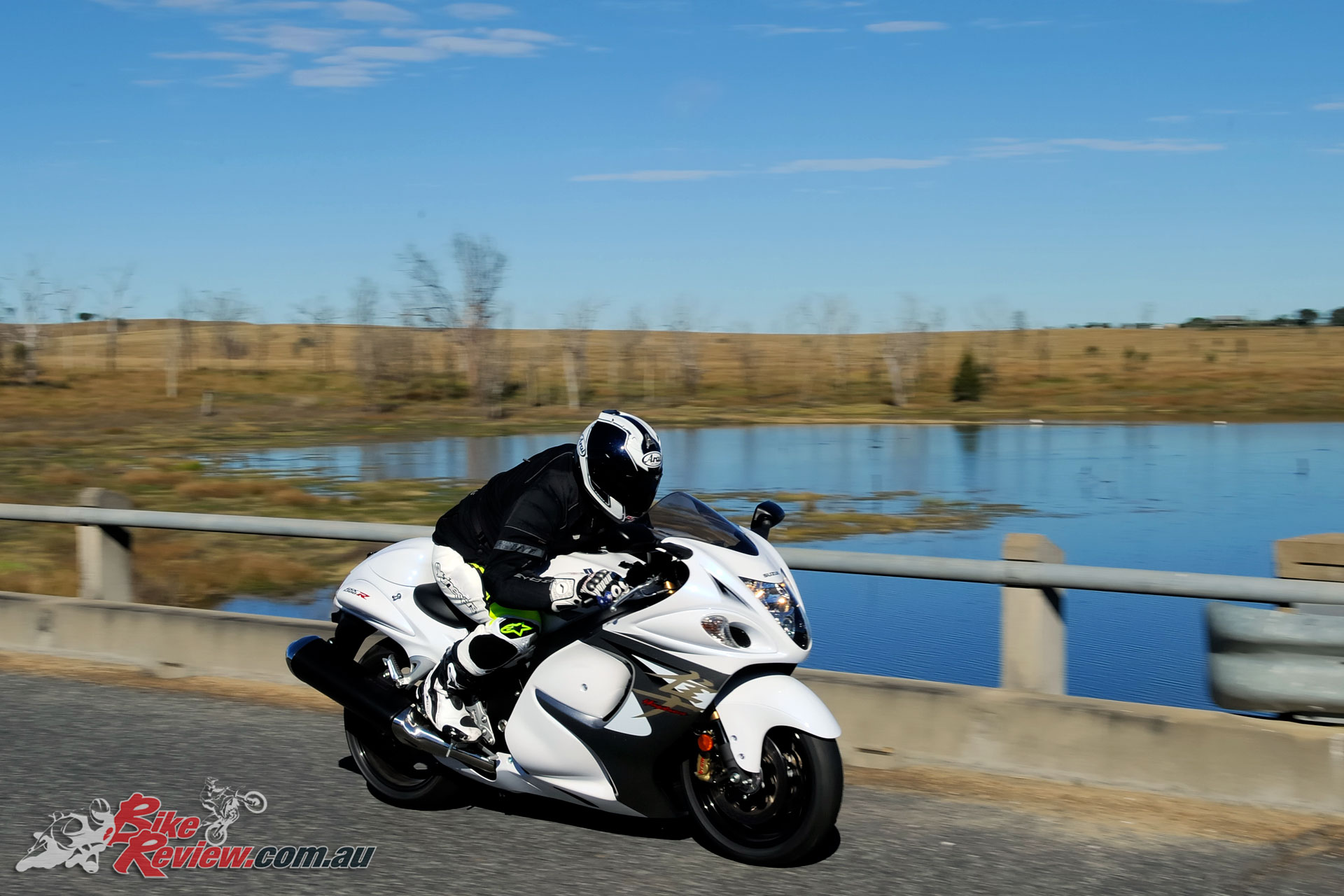
The Hayabusa isn’t just a weapon with incredible performance, it’s also a great sports-touring option, especially two-up
While doing one of the photoshoot stops I had the opportunity to test the ABS brakes. Accelerating to 100km/h I simply jammed the lever on as hard as I could. The bike stopped in a perfect straight line, with the ABS intervening and preventing me from crashing (I was purposely trying to lock the front). I then followed with a more progressive emergency stop until the ABS again intervened, then finally an emergency stop just outside lock-up. Over the test loop, there was no brake fade, which was something that did present itself on the previous Tokico brake model. Feel and feedback is much, much better now. The brakes are sensational.
The 2018 model is still the 2013 updated Hayabusa, which is a bloody fantastic bike!
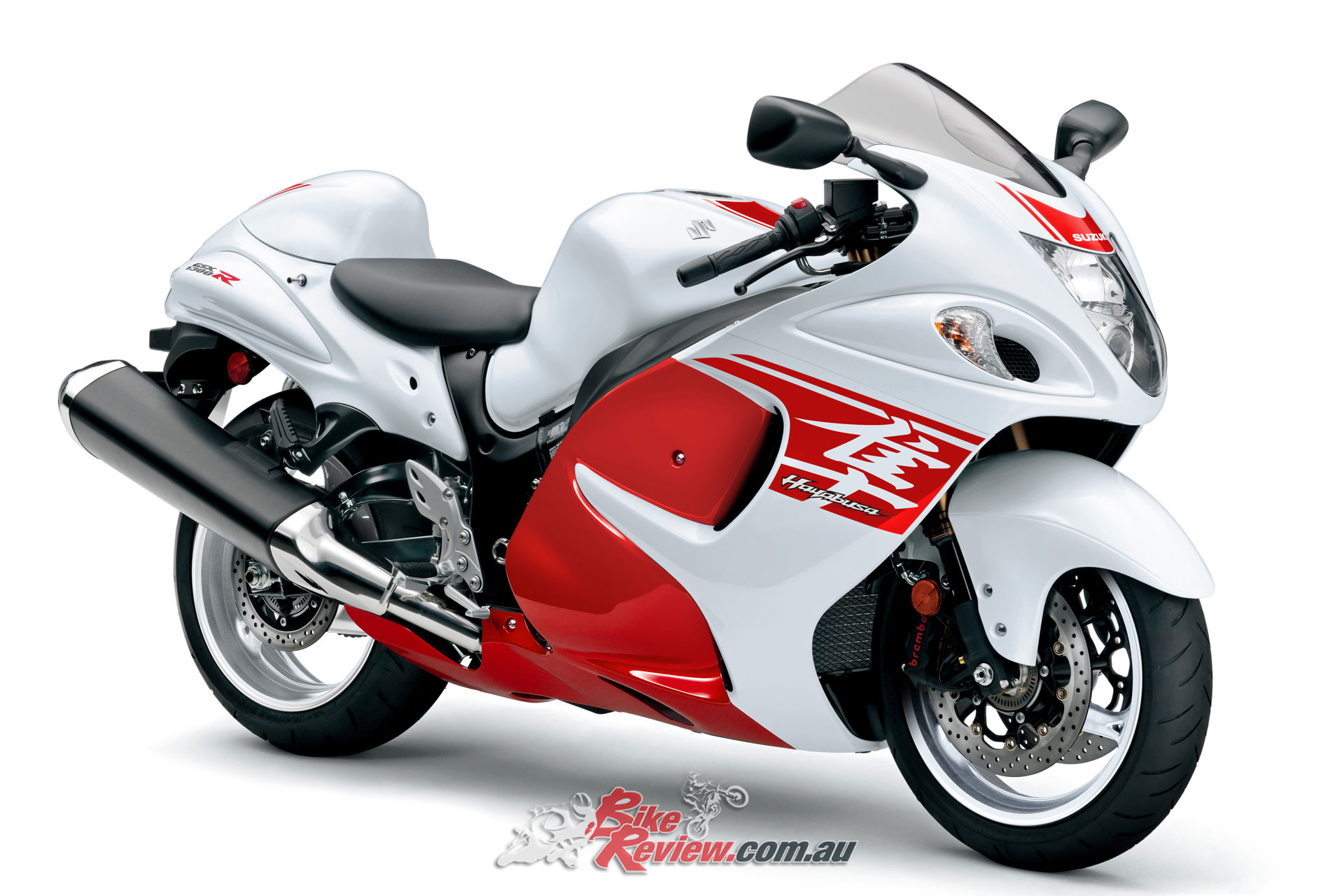
The Hayabusa is available in two new colour options for 2018. Pearl Mira Red/Pearl Glacier White pictured.
Suzuki Hayabusa Tech Talk – Engine
The design and layout of the Hayabusa remains the same for 2018. The 1340cc engine cylinders are coated with SCEM (Suzuki Composite Electro Chemical Material) to improve heat transfer and ring seal, while the U shaped cut outs at the bottom of each cylinder help the air flow to the next cylinder on each downward stroke.
The pistons are a forged three-ring slipper design, with cutaway sides and 18mm diameter gudgeon pins. The shape of the piston crown contributes to the 12.5:1 comp ratio. The upper compression and oil control rings on each piston are coated with a chrome-nitride coating and the upper ring also has an L shaped cross section for improved sealing on the compression stroke. The chrome-moly conrods are shot peened for additional strength and the forged crank is balanced to perfection.
The titanium valve angle is 14 degrees. The light valves allow for light valve springs, a single spring each valve, higher lift and decreased mechanical losses. Valve lift is 9mm on the intake side and 8.6mm on the exhaust side.
The intake valves open at 43 degrees BTDC and close at 58 degrees ATDC, with 281 degrees duration, while exhaust timing is 62 degrees BTDC opening and close 24 degrees ATDC, giving 266 degrees duration. The cam chain tensioner is hydraulically operated and is the same as the unit fitted to the GSX-R750. The crankcases feature a reed valve to prevent pressure waves from the airbox.
The curved radiator is compact and the radiator core is thin and dense. There are two thermo fans, both with integrated rings on the end of each blade, eliminating lost airflow between the blade tips and the housing.
An oil stream is constantly sprayed onto fourth, fifth and sixth gearsets to reduce mechanical noise and decrease gear wear. Final gearing is 18/43. The clutch features Suzuki’s hydraulically controlled back-torque limiting system.

The Hayabusa is particularly famous for being capable of 300km/h+ on the first model, before being restricted
The fuel injection system is part of Suzuki’s most powerful engine management system, controlled by a 32-bit, 1024kb ROM microprocessor. The tapered 44mm throttle-bodies feature Suzuki’s SDTV (Suzuki Dual Throttle Valve), with the primary butterfly’s controlled by the throttle and the secondary butterfly’s controlled by the EMS.
Each throttle body has two 12-hole injectors. The primary injector is aimed at a steep 30-degree angle down the inlet port, to give optimum throttle response and operates at all times. The secondary injector is aimed at the secondary throttle valve and adds extra fuel at high rpm or high load conditions. Primary injector on-time is controlled by the EMS via info from engine rpm, intake pressure and throttle position. On-time for the secondary injector is determined through rpm and throttle position.
Another feature on the Hayabusa is the S-DMS (Suzuki Drive Mode Select) three-range map selection, with which Power has been increased from 173 to 194-horsepower and torque from 104 to 114ft-lbs.
Chassis & Bodywork
Suzuki spent plenty of time in the wind tunnel during development of the Hayabusa. The shape is designed to reduce drag, particularly from the rider’s head, knees, elbows and shoulders. All fairing fasteners are hidden and the shape of the intakes and the top of the screen are also streamlined. The top of the tank is low to help with tucking down, and the indicators and rear lights are integrated into the bodywork.
The frame is light thanks to the removal of unnecessary brackets and the wheelbase is 1480mm, while rake is 23.4 degrees and trail 93mm.
The 43mm KYB inverted forks feature a DLC (Diamond Like Coating) on the inner stanchions to reduce stiction and eliminate surface irregularities. The forks are fully adjustable and wheel travel is 120mm. A steering damper is also fitted to the lower triple-clamp. The shock is a KYB unit and has a 14mm rod. The shock piston is 43mm and travel 140mm. The shock is fully adjustable.
Thankfully Suzuki have upgraded the brakes. Brembo four-piston radial-mount calipers are featured and the bike now has ABS. Lighter and more rigid than conventional bolt-together calipers, the Hayabusas top-of-the-line radial-mount Brembo Monobloc front brake calipers deliver better feedback to the rider. The piston diameters were enlarged from 32-30mm to 32-32mm as larger pistons help apply greater force to the brake disc, which results in increased initial bite and a more controlled feeling.
A new standard equipment Antilock Brake System (ABS) unit features a lightweight, compact design. The ABS enhances brake performance by helping prevent, to a certain extent, wheel locking due to changes in road conditions or excessive braking, by matching stopping power to available traction.
2018 Suzuki GSX1300R Hayabusa Specifications
Price: $20,790 Ride Away
Warranty: Two years/unlimited kilometre
Colours: Glass Sparkle Black, Pearl Mira Red/Pearl Glacier White
Claimed power: 146kW [194hp]@9600rpm
Claimed torque: 154Nm [114ft-lbs]@7200rpm
Dry weight: 220kg
Fuel capacity: 21 litres
Engine: Liquid-cooled DOHC inline four-cylinder, 16-valve four stroke, TSCC, bore and stroke: 81 x 65mm, displacement: 1340cc, compression ratio: 12.5:1, Digital EMS with 32-bit, 1024kb ROM processor, 12-hole dual injectors per cylinder, 44mm throttle bodies, ram air, four-into-two-into-one-into-two, stainless steel, cat converter, stainless steel tapered mufflers
Gearbox: Six speed, constant mesh
Clutch: Wet multi-plate, hydraulic actuation
Final ratio: 18/43
Final drive: O-ring chain
Chassis: Twin spar alloy, steel sub-frame
Wheelbase: 1480mm
Rake: 23.4 degrees
Trail: 93mm
Suspension: Fully adjustable 43mm KYB inverted forks, DLC (Diamond Like Coating), 120mm travel, fully adjustable KYB shock, 140mm travel
Brakes: ABS, dual 310mm rotors with four-piston radial-mount Brembo calipers, conventional master-cylinder, single 260mm rotor with single-piston Brembo caliper
Wheels & Tyres: Cast alloy three-spoke, 3.50 x 17in, Bridgestone 120/70 – 17, 6.00 x 17in, Bridgestone 190/50 – 17
DIMENSIONS
Ground clearance: 120mm
Seat height: 805mm
Overall height: 1165mm
Overall length: 2190mm
Overall width: 735mm
Instruments: Analogue gauges and digital LCD info display


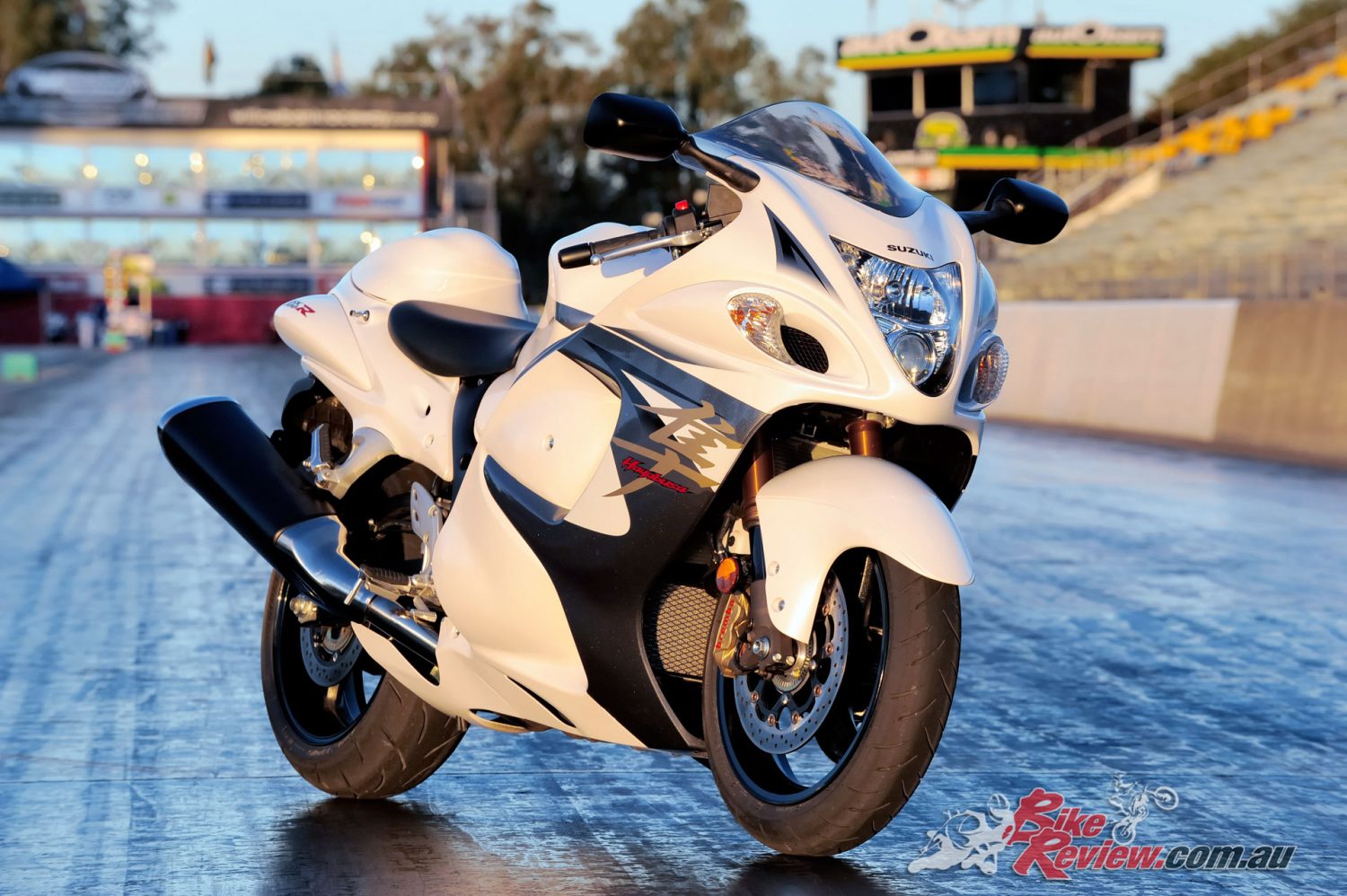
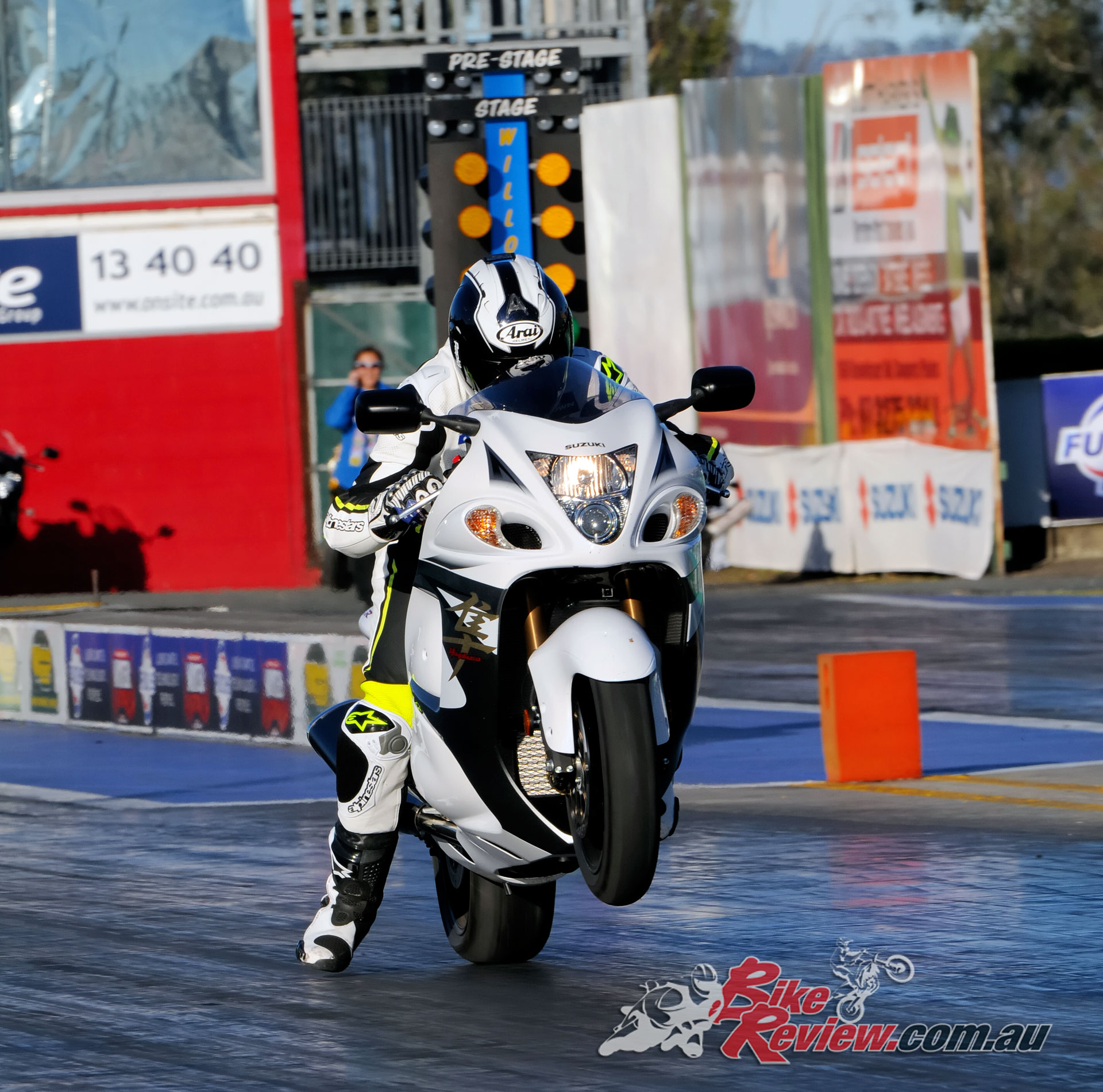
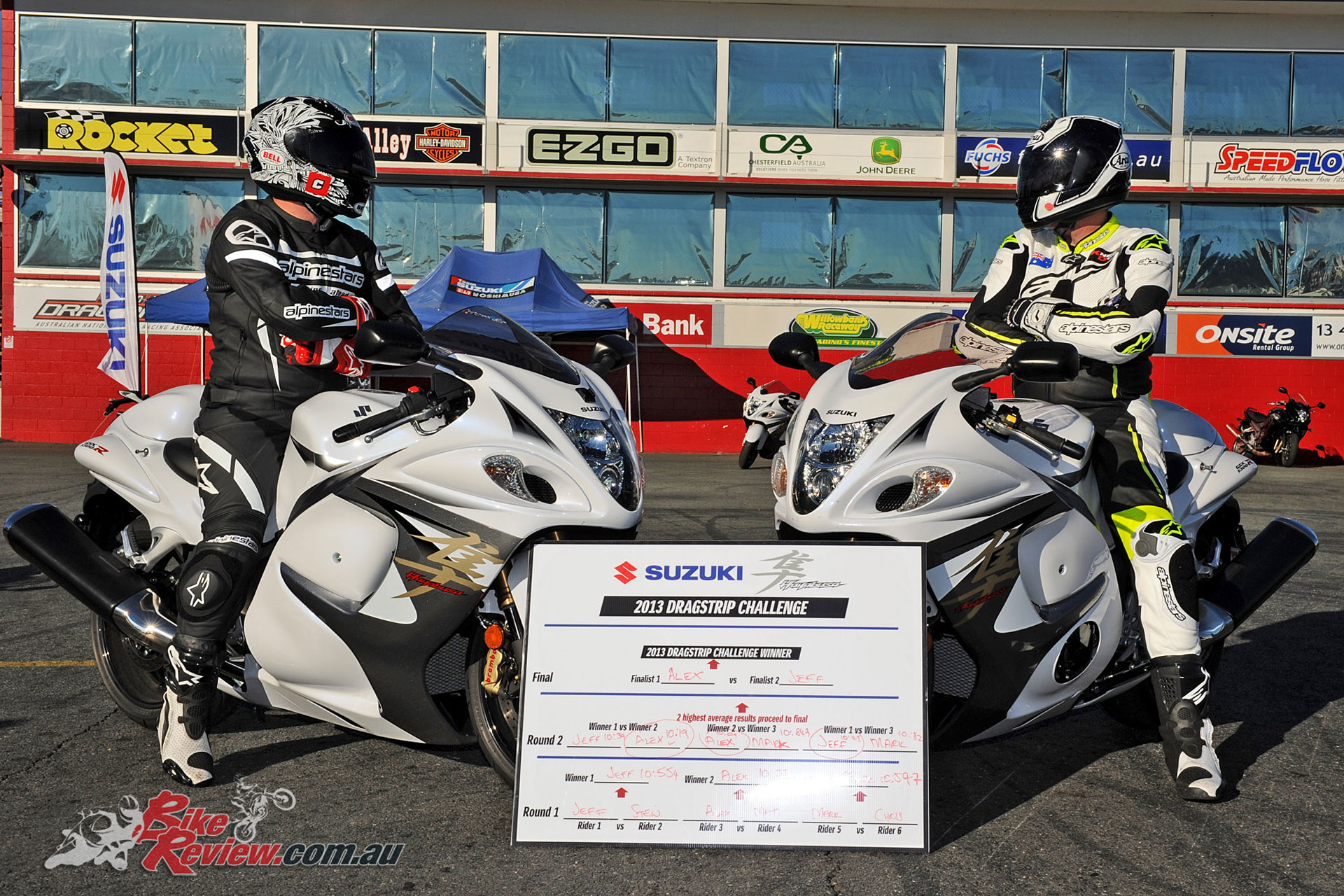
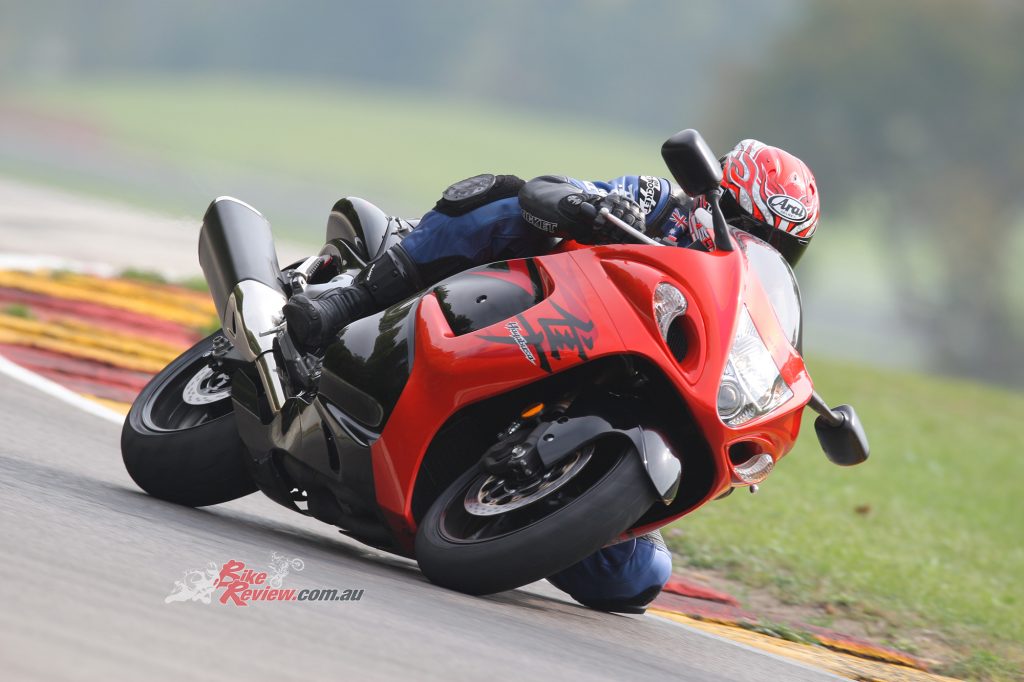
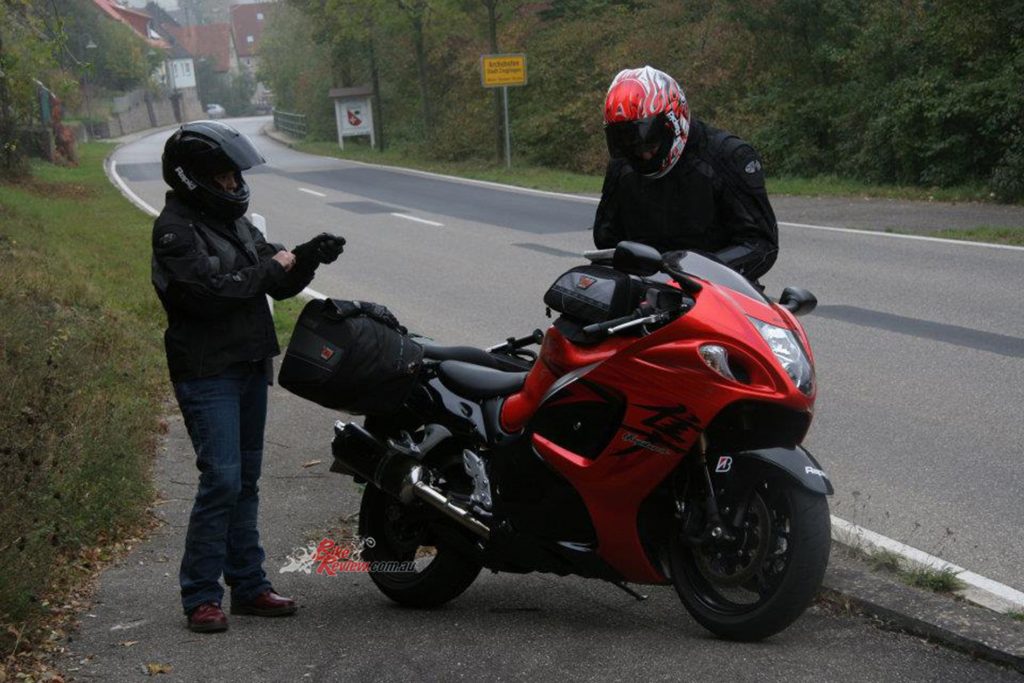

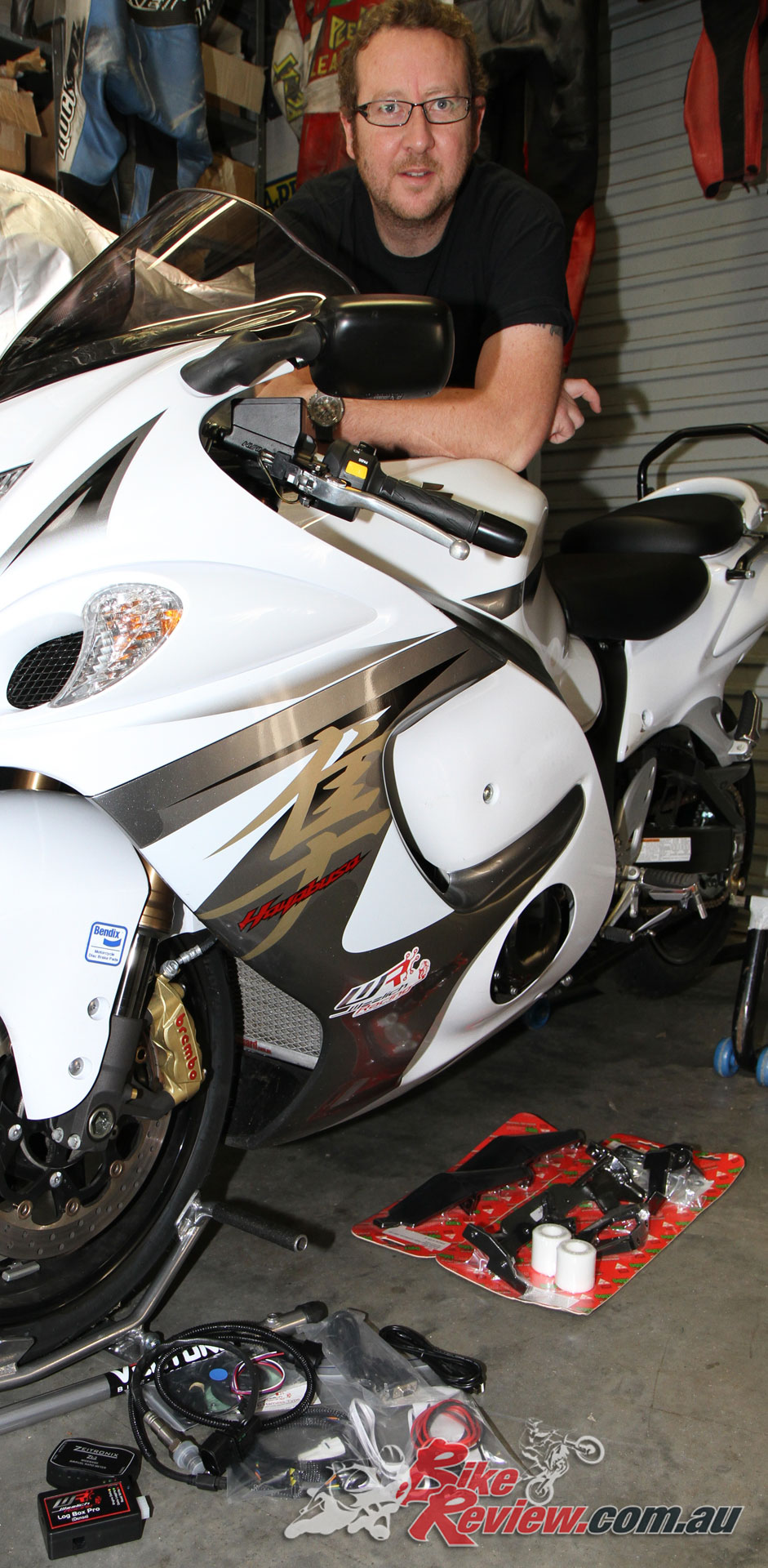
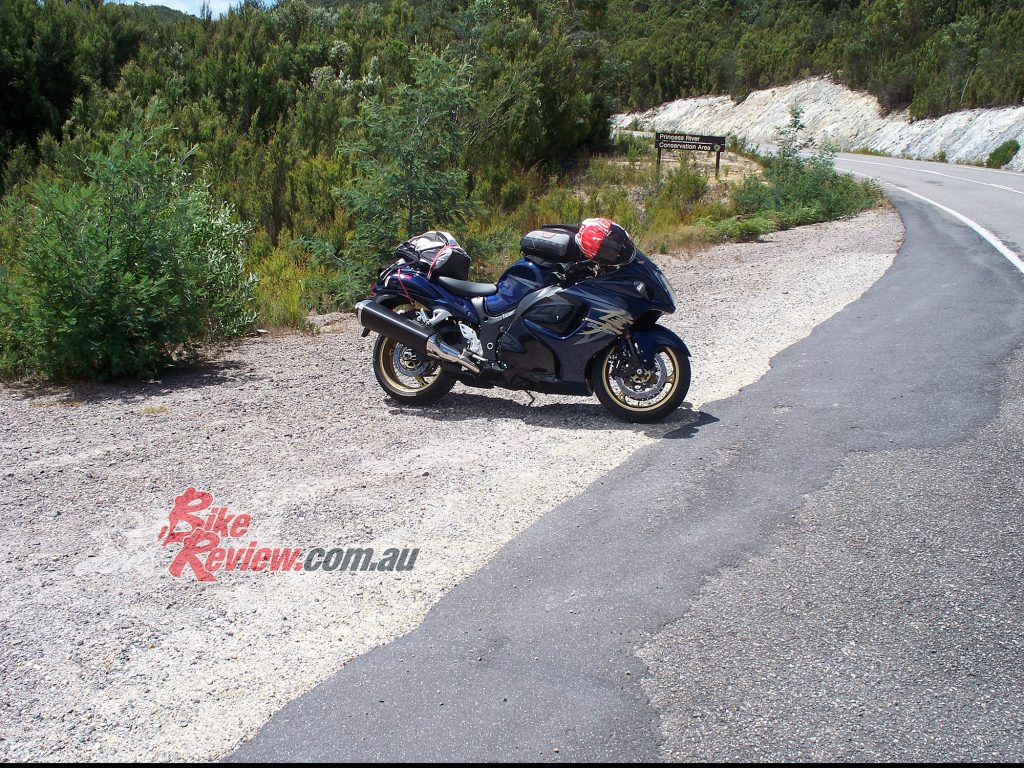

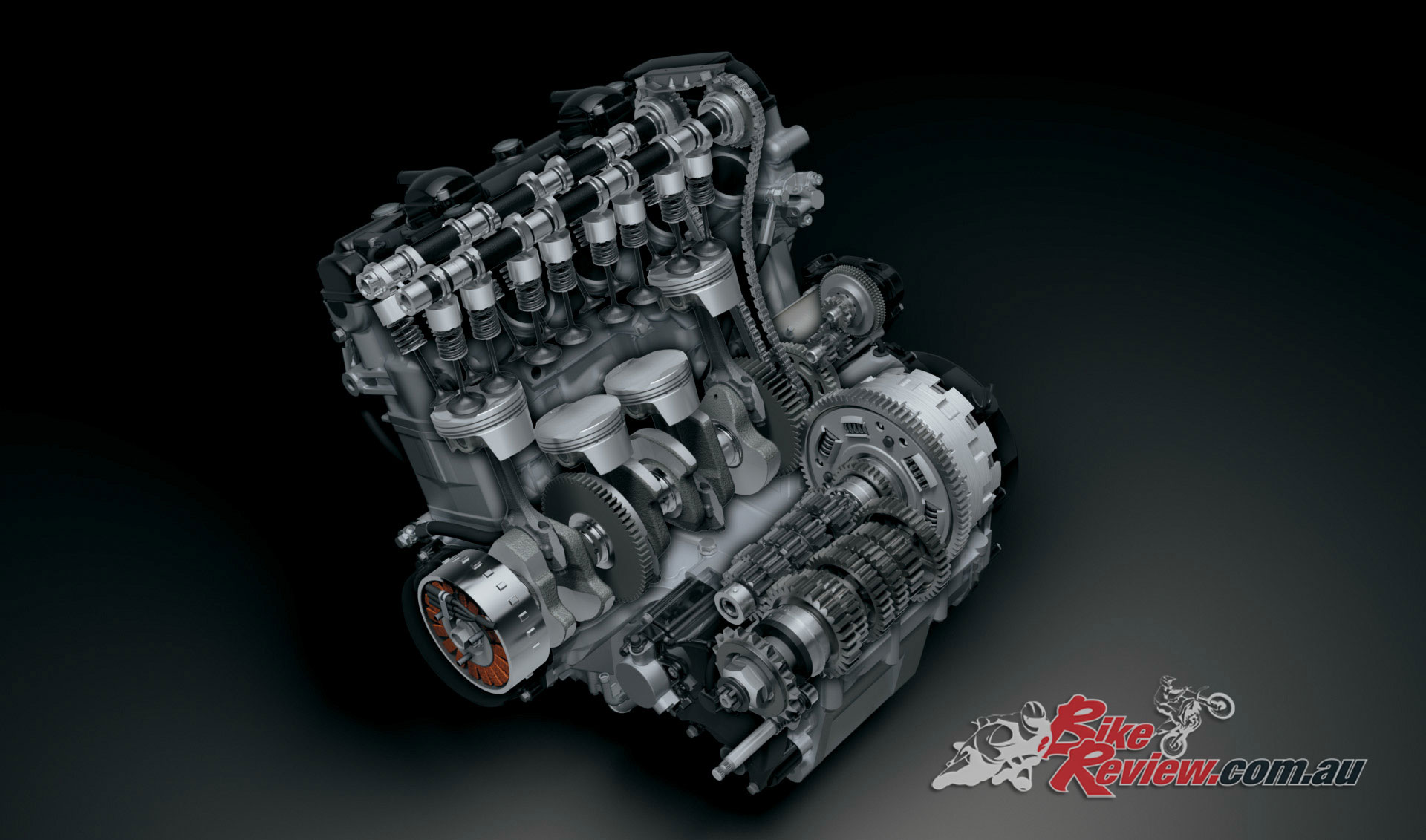

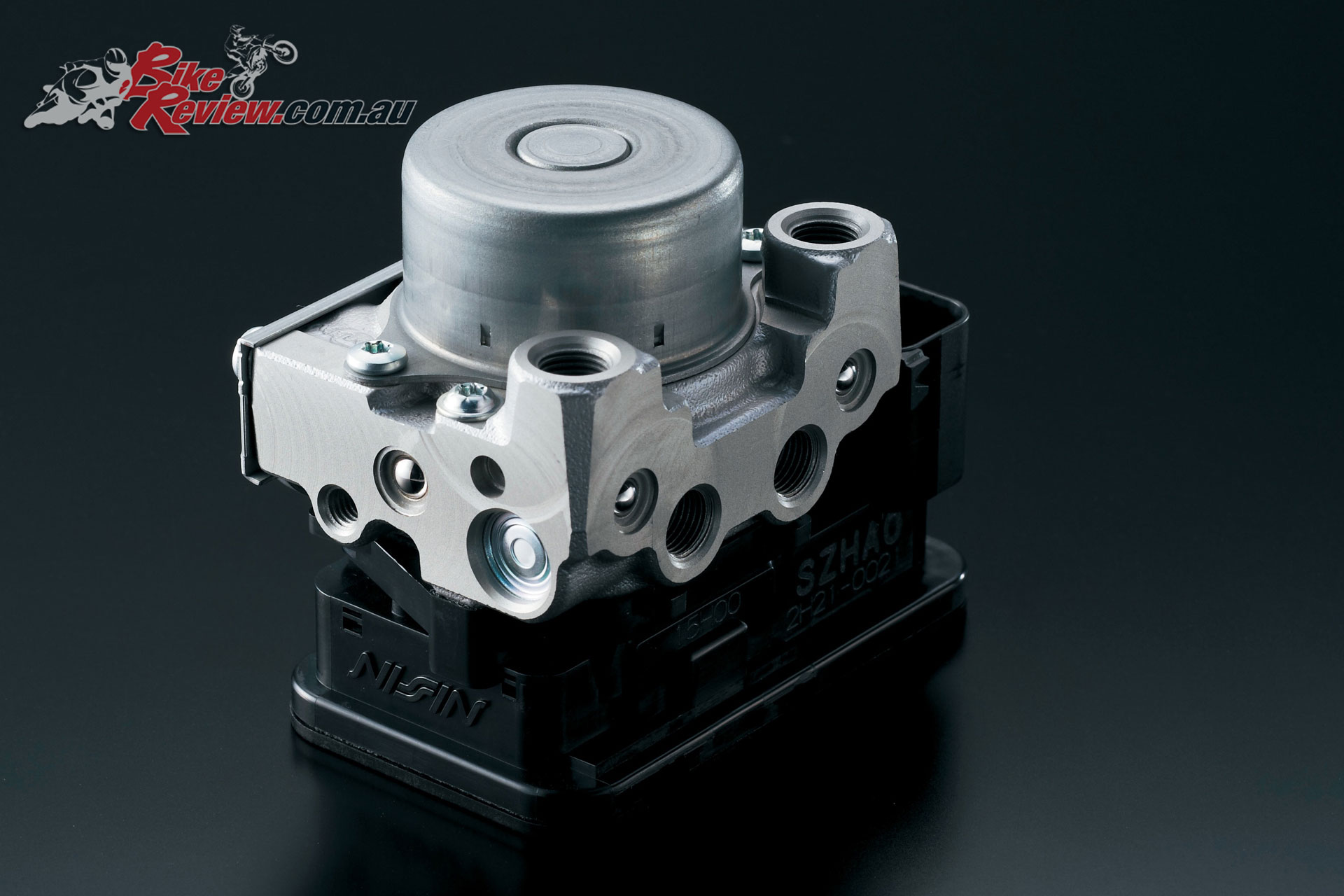
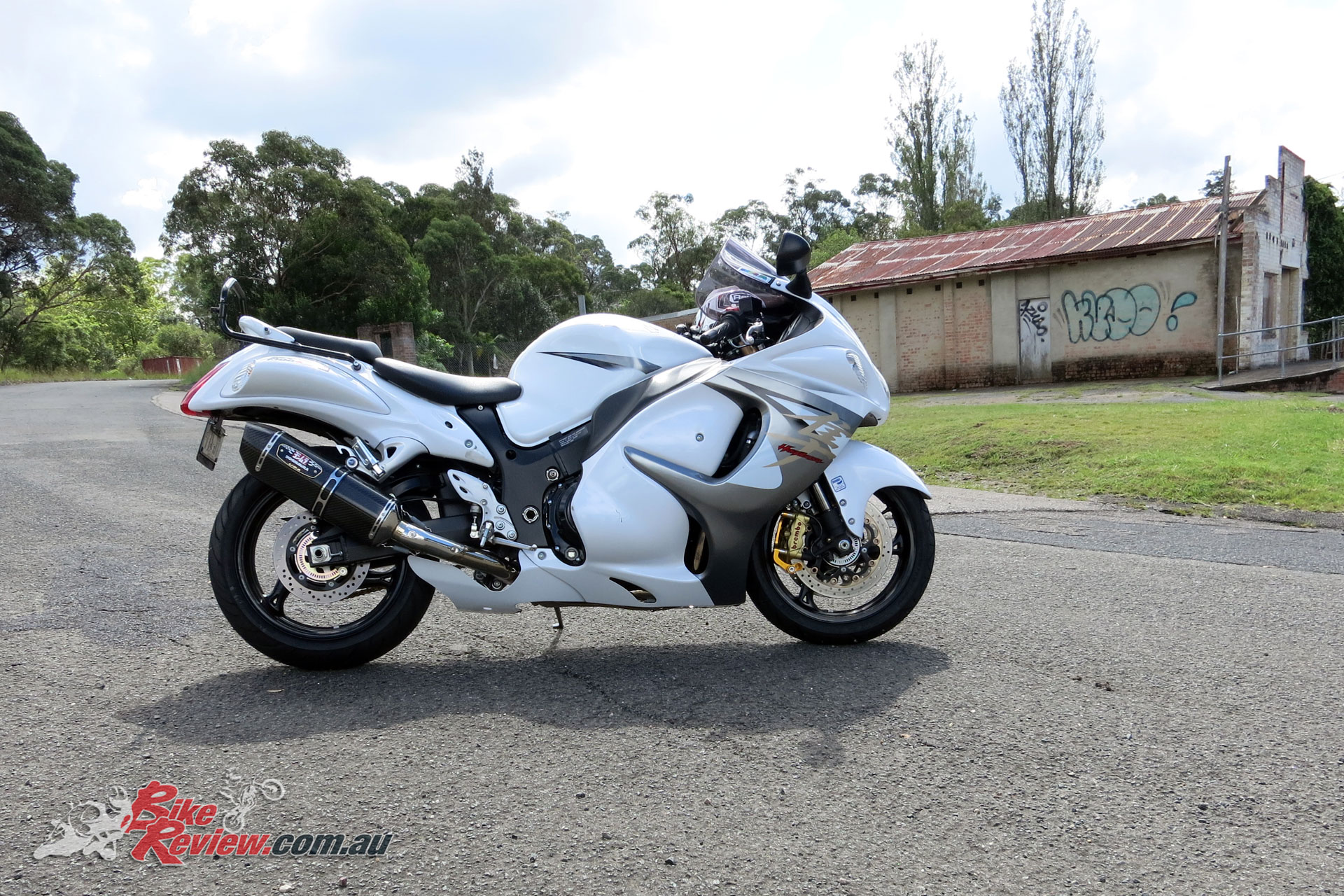
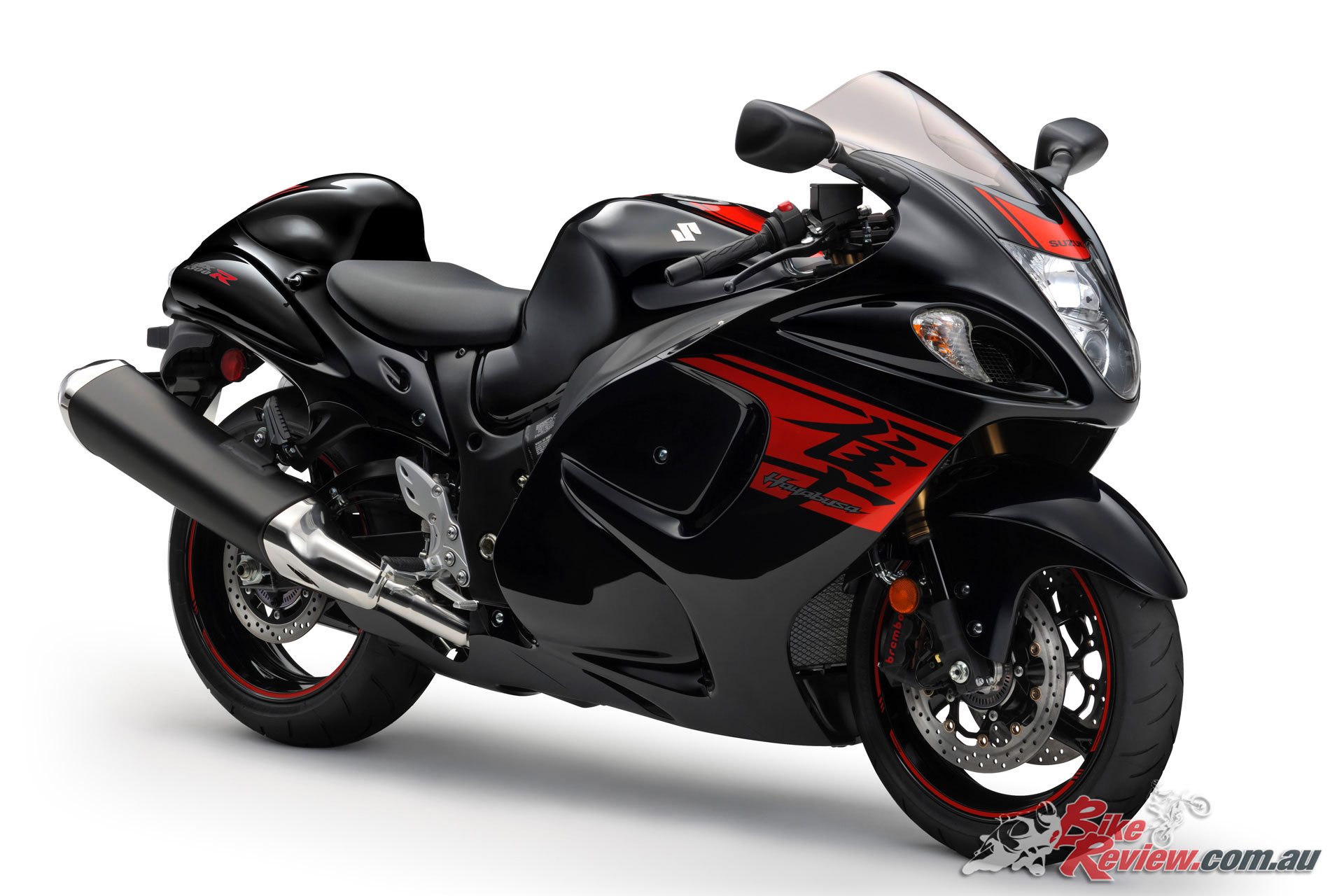
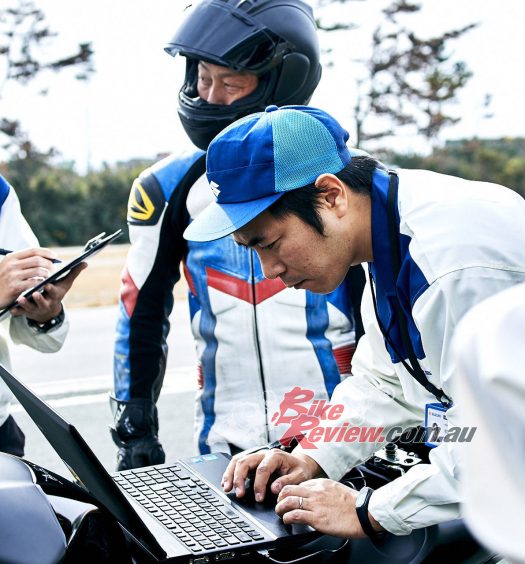
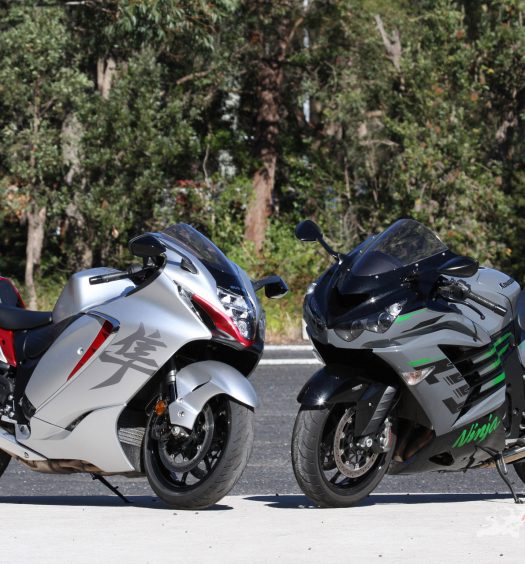





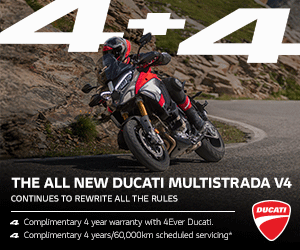







July 30, 2020
Hello Jeff
Thanks for your review of the Hayabusa. I have a 2017 L8 model and have found in wet conditions the head light fogs up around the high beam area when it is turned off. I emailed Procycles in Hornsby and they said that if you turn the high beam on and the fogging disappears after ten minutes then there is no probs and everything is working correctly. This does happen but the fact that the light fogs up is a real let down. Have you heard of this and more importantly Have you heard of a fix for this?
Cheers
September 25, 2020
Hi John, I have owned two Hayabusas and never had this issue. Just asked my uncle, also an owner, same he hasn’t either. I’ve emailed Suzuki to ask more. Jeff.
December 25, 2020
I am about to buy myself a New 2020 model in a month or so
i will be honest with you and I started looking for negative comments for the BUSA
I love this bike since I was a kid and it is a dream for me to own one but I am scared as well because I am only 5’6 and want to be sure if it would even look nice or not.
purpose of buying is to ride regularly and then with some experience travel around AUSTRALIA
please give me honest review about my Height lol
January 27, 2021
I think you will be fine! They are well balanced with a low centre of gravity. Your height may not be an issue! Enjoy… Jeff.
April 11, 2022
Hello, hypothetically if I robbed a bank would
this out run the highway patrol cars?
May 16, 2022
I reckon it would!